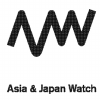RIKUZENTAKATA, Iwate Prefecture--Seemingly against all odds, Akihiro Kumagai's vineyard is producing wine.
RIKUZENTAKATA, Iwate Prefecture--Seemingly against all odds, Akihiro Kumagai's vineyard is producing wine.
That the young vintner is able to produce wine after the 2011 tsunami devastated his family's modest holding is testament to the area's recovery, and Kumagai, 32, hopes his brand will be a signature drink.
Kumagai is now in the process of fermenting his grape harvest ahead of bottling early this year at his family’s Kanda Vineyard. It will be the first wine produced by the family business in more than 60 years, using grapes planted after the Great East Japan Earthquake and tsunami devastated this coastal city.
The towering waves caused extensive damage to the family's 2-hectare vineyard, inundating one-third of the site and destroying many of the vines that had previously produced grapes for non-alcoholic beverages.
“I hope that people whose lives were affected by the disaster will use my wine to raise a toast once they get over this calamity,” Kumagai said.
Kumagai is the sixth-generation operator of the vineyard, which was founded in 1905.
It became the first winery in the Tohoku region after his great-great grandfather obtained a license to produce the Ebisu Wine-brand that was sold locally until shortly after the end of World War II in 1945.
As the production of wine dwindled during and after the war, the family gave up the license in 1953, and focused on producing grapes for juice.
After apprenticing at Italian restaurants in Tokyo, Kumagai returned to Rikuzentakata to take over the family business seven years ago.
While teaching cultivation methods to his son, Kumagai’s father told him about the family’s winemaking history.
The son came across jars used decades ago for wine as well as old wine labels in the basement of a storehouse, helping him to connect to the family’s winemaking past.
“I felt compelled to restart the winemaking business,” Kumagai said.
Shortly after he started his winemaking training at the Iwate Industrial Research Institute in Morioka, the magnitude-9.0 quake and tsunami struck.
It was a desperate time as the family tried to restore the submerged vineyard, but fortune smiled on the Kumagais as 50 wine grape seedlings that had been ordered before the disaster arrived.
Kumagai and his family members planted the seedlings by hand. Two months after the disaster, vines sprouted, giving much-needed encouragement to the family.
Kumagai succeeded in his trial attempts to make wine in 2014 and obtained a license to produce wine last October. Grapes harvested in November are now vinifying, with the first bottles set to roll out early this year.
Kumagai's output will be branded “Rias Wine” after the region’s famous ria coastline, which, with its irregular contours, is known for its scenic beauty.
“I would like to eventually produce a white wine that goes well with seafood from the Sanriku region,” Kumagai said.

